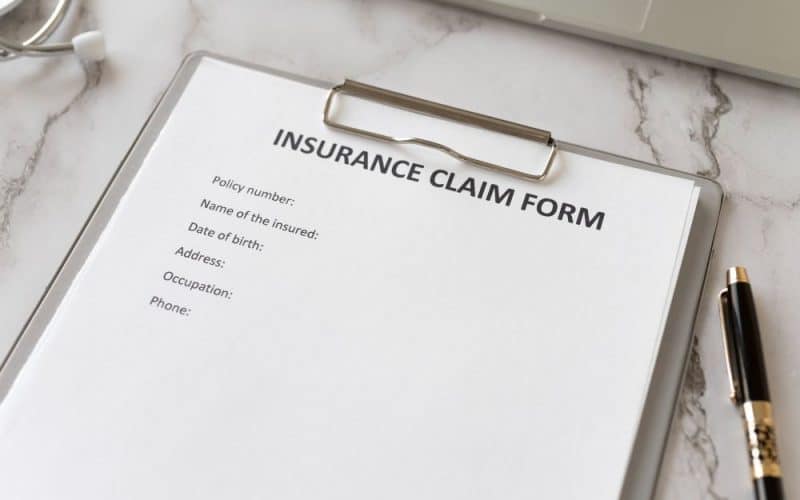Have you ever wondered how you’d cope if you lost your valuables to fire, theft or damage from flooding? That is what contents insurance is for – to provide financial protection if those things happen.
Contents insurance is a type of home insurance. It covers loss or damage to all the things in your home that aren’t part of the structure or building. This includes all your personal belongings – anything not physically attached to the building – against the cost of loss or damage.
The other type is buildings insurance (which protects the structure of your house and its permanent fixtures). You can buy both types of insurance separately, or you can buy them as a joint home insurance policy.
Overview of contents insurance
Contents insurance is insurance that pays for damage to, or loss of, an individual’s personal possessions while they are located within that individual’s home. Some contents insurance policies also provide restricted cover for personal possessions temporarily taken away from the home by the policyholder.
In this context, “possessions” means anything that is not permanently attached to the structure of the home (possessions that are permanently attached to the structure of the home can only be insured via home insurance.) Some contents policies may also include possessions kept in outbuildings or in the garden area attached to the house.
Contents insurance is usually sold alongside home insurance but it can also be purchased as a stand-alone policy, especially for those who are renting rather than owning their home. It is optional, whereas if you have a mortgage there is a requirement to have buildings insurance. However, insuring your possessions is generally a sensible idea, whether you’re a tenant or the owner.
If you’re a tenant and want your possessions to be insured, it’s up to you to take out contents insurance, not the owner.
How contents insurance works is you pay your insurer a premium to cover you if something happens to the things in your home. This could be something like a fire or flood damaging your furniture, or your jewelry is stolen. You can choose to pay:
- Once a year
- Every month. This sometimes costs more overall.
Your insurer will try to repair any damage if something goes wrong. If this isn’t possible they will look to replace it on a like-for-like basis.
Types of contents insurance
There are three main types of policies available:
- Bedroom rated. The insurer works out the amount of contents cover you need (the ‘sum insured’) based on the number of bedrooms you have. These policies typically provide between £40,000 and £50,000 of cover as standard. This is usually enough for most houses, but make sure it’s enough to cover your possessions.
- Sum insured. You (not the insurer) have to calculate the amount of coverage that you need.
- Unlimited sum insured. All your contents are covered without limit, so you don’t have to worry about being under-insured.
If you have a ‘sum insured’ policy and need to calculate the amount of cover you need, you have two main options. One is to search online for a content calculator, which most comparison sites offer. Or, you can list everything that you own and add up what it would cost to replace every item at today’s prices.
Be aware that if you use a comparison site to shop around you might not get a choice. The site will ask you how much contents cover you want and will pick policies that offer this.
What does contents insurance cover?
Policies can vary in terms of what exactly they cover, but they usually include:
- clothing
- furniture
- jewellery
- electrical goods.
You’ll usually be covered against theft, fire and flood, but cover for accidental damage tends to be an optional extra.
‘Personal possessions cover’ can also be added for extra cost. This is sometimes referred to as an ‘all-risks extension’ and it will cover items you take outside your home, including:
- laptops
- cameras
- jewellery
- handbags
- mobile phones/tablets.
Some insurance policies will also cover you for when you go abroad, so if you lose or damage your possessions while you’re away, you’ll be able to claim for them on your contents insurance. This is usually another optional extra that you add in return for a higher premium.
What isn’t covered by contents insurance?
The structure of your home and the fixtures and fittings all come under buildings insurance.
Your items are only covered by contents insurance when they are in your home. So if your mobile phone is lost or stolen when you’re out, it won’t be covered. You can add extra cover to your policy to cover personal things away from your home.
The same goes if you leave your home for a long period and someone breaks in. This might mean your claim is invalid. You’ll need to check your policy to see how long you can leave your property empty for.
Other things that may not be covered by contents insurance include:
- Accidental damage. If you spill a drink over your laptop, you may need extra cover for this
- Wear and tear. Gradual damage that happens over a long period of time is normally not covered
- High-value items. A high-value item may need to be named on your policy. There are limits on how much you can claim for certain types of items unless they are included in your policy
How much is contents insurance?
According to the latest data, the average contents insurance quote is £49 per year. How much your contents insurance costs depends on several factors including:
- Where you live.
- The value of your possessions.
- Whether you add bolt-ons like accidental damage cover or personal possessions away from home.
Contents insurance if you work from home
If you work from home, you may need more than basic contents insurance.
If you’re an employee and working from home, you probably don’t need extra insurance. Your employer’s insurance should cover your laptop or monitors.
But if you work for yourself, you’d only need cover if you have employees working from your home or people visiting for meetings. But it’s best to check the wording of your home contents insurance so you know exactly what you’re covered for.
Does contents insurance cover mobile phones?
Your mobile phone should be covered by your home insurance, just like any other possession. This means if it’s stolen from your home in a burglary or damaged in a fire or flood, it should be protected.
However, if you really rely on your mobile phone it could be worth adding accidental damage and personal possessions away from home cover to ensure you have more comprehensive protection.
Alternatively, you may want to consider specialist mobile or gadget insurance.
Am I covered for damage caused by my pets?
If you want to cover for any damage your pets may cause your belongings you should consider accidental damage insurance. This is because most pet damage isn’t covered by a standard contents policy.
It’s usually an add-on to a contents insurance policy, but what it covers depends on the policy. It might provide cover if your dog sends your favorite vase flying or destroys your sofa, but each policy varies.
This is why you should check if the add-on is appropriate for the type of damage you think your pet could cause before you take it out.
Does my contents insurance cover my bike?
It depends on how much your bike is worth. If it’s an old battered bike, your contents insurance policy will probably cover it. However, insurers set a limit on how much they cover bicycles. Above this value, and you should specify that your bicycle is a high-value item on your policy.
You might also find out that it’s only covered as a standard if it’s stolen from your home rather than when you are out and about.
Depending on the circumstances you may be better off getting a stand-alone bicycle insurance policy.
Getting the right contents insurance
When choosing contents insurance, think about the value of your belongings. Ask yourself what you could afford to replace or lose if something went wrong.
Cover the cost of replacing your belongings
Most contents insurance offers the replacement value of your belongings, sometimes called ‘new for old’ cover. It covers the full cost of replacing your belongings with new ones, which often cost more. Replacement value gives you the best cover, but it’s more expensive.
Some policies offer the value of your lost or damaged belongings. This covers their worth at the time of insurance. For example, your fridge’s value might currently be $500, so you get $500 from the insurer. It may cost more to buy a new one of similar quality. This value is likely to depreciate (go down) each year.
When you claim, insurers may repair or replace the damaged items, or pay you the amount it would cost to repair or replace them.
Calculate the value of your belongings
Work out what your belongings are worth to see how much cover you need. It will also help you identify what items are worth insuring.
Start by listing all your belongings and how much each item would cost to replace (at today’s prices). Include as many details as possible. For example, serial numbers, receipts, warranties, photos, condition and the date of purchase.
Check the exclusions
Contents insurance covers loss and damage caused by defined or insured events. These can include fire, storm, theft and vandalism.
It’s worth checking what isn’t included. For example, damage caused by floods, intentional or criminal damage, or theft if you leave windows or doors unlocked.
Also, check what items your insurance does not cover and decide if you want to add something. For example, portable items like your handbag, glasses, camera, bicycle, mobile phone, tablet or laptop. Or valuable items like jewelry and special collections, such as artwork, stamps, rare books or memorabilia.
Check limits for certain items
Most policies have maximum amounts on how much you claim for certain items. For example, suppose $1000 is the limit for electrical appliances. If a fire destroys your $2000 television, you’ll end up having to pay the difference to replace it.
Adjust your excess
Most insurers allow you to adjust your excess. Weigh up the difference between having a high premium and low excess, versus the opposite. You may be able to save on your premium by increasing your excess.
Consider accidental damage cover
Most contents insurance doesn’t include cover for accidental damage. It may be worth adding this if you want to cover for mishaps, such as staining your couch or smashing a vase.
Also check what the insurance doesn’t cover, for example, damage to clothing or computers.
Consider renters insurance
If you rent your home, renters insurance could be a good option. This type of contents insurance is usually cheaper. It may cover accidental damage to the house, and legal costs if someone injures themselves on the property. However, it has more exclusions and limits than regular contents insurance.
Take advantage of discounts and benefits
You may pay a lower premium if you bundle your contents insurance with your home insurance, pay annually or apply online. You could get a discount if you have deadlocks, fire extinguishers, smoke alarms or a security system.
Some insurers offer extra benefits. These could include replacing locks and keys after a break-in, or covering for your belongings when you move house.
Recommended Articles
- Certificate of Insurance for Business: Why, When & How to Get One?
- How Much Does Homeowners Insurance Cost?
- Best Car Warranty Companies For 2023: Reviewed
- 9 Best CRM Software For Insurance Agents
- Self-employed Business Insurance: Cost, Types & Coverage
- Insureon Insurance Review 2023: Is It a Good Fit for Your Business?






